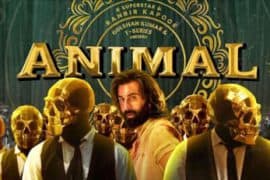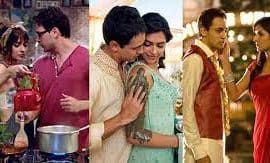The highly anticipated Gully Boy has finally released. Does it live up to its own hype and add more fuel to a new hype for a new hip hop?
“Apna time aayega,” raps Ranveer Singh in a faded hoodie in a dimly lit club in the film ‘Gully Boy’. Literally translating to ‘our time will come’, the phrase quickly got on the public’s tongue even before the film hit the theatres. Around me in the college campus, I see people rapping Ranveer’s lyrics, or I spot someone wearing a hoodie reading the optimistic motto, almost every day.
On the day of St. Valentine, ‘Gully Boy’ is finally out. No matter how it turns out now, one thing is for sure, gully rap ka time aa gaya hai (gully rap’s time has come).
Rap as a genre emerged only in the past few decades, with groups like Niggaz Wit Attitudes (NWA) adding a sense of rebellion and raw truths in their raps as they walked through the streets of Compton. But over time, rap has spread far and wide, and in that blend of globalisation and localisation, it has even diversified. Now far away from the ghettos of West Coast, rappers rap their truths and rebellion from the slums of India’s West Coast.
As several documentaries (most notably Vice’s ‘Kya Bolta Bantai’) have shown, gully rap started from scratch but eventually became a phenomenon all over India. This added on to the hope that independent artists also can have a future in a country dominated by film playback singers.
However, away from the feature news pieces and the documentaries, this year, Gully Boy’s release has given the ultimate boost to this music scene. Gully rap might be the first independent music genre that has transitioned from rising online streams to the cinematic mainstream. Now, those who play Gucci Gang on their phone are also playing Gully Gang. Those who just listened to rappers like YoYo Honey Singh and Badshah, are shaking their heads to Divine and Naezy.
Zoya Akhtar, who has otherwise directed classy bourgeois drama comedies, has clearly gone out of her comfort zone with this project. When it comes to the cast, off-screen persona of the leading man, Ranveer Singh, seems a bit insensitive to the political undertones of the viral songs as can be seen by certain pre-release interviews. While that can be certainly questioned, still the movie and his act still deserve respect for choosing an unconventional underdog story with shades of realism to it.
Some critics felt the film could have done way more on exploring the lives of slum-dwellers while others welcomed it as a new step in Bollywood praising the performances. As Rishabh Gogoi, a second-year student from Cluster Innovation Centre puts it into words- “It was a great experience. When songs like Apna Time Aayega and Azadi played, the crowd sang too at the top of their voices. The movie lives up to its expectations and is probably the best ode to gully rap, even if it might have its limits when you look in retrospective.”
But the question is- will it stop here?
Time would tell us what will happen to the future of hip-hop in India because the current wave seems to flow more and take new routes. Definitely, the Mumbai rap game was mostly based on the Dharavi region. But in a city with more flyovers than streets, like Delhi, hip-hop is getting very diverse.
“I hail from Assam but I came to Delhi for my studies, and in that period, I grew as an artist. I picked up different tricks and trends in the music scene here,” says J’97, a Delhi-based rapper sitting on the balcony of his flat. He supports the view that a suburbia like Delhi is a melting pot of cultures (Delhi has more non-Delhiites after all).
Prateek Pankaj, a first-year History student from Hindu College raps as a hobby. “These days, Indian rap is undergoing more changes and it’s getting popular. The initial songs to go viral were songs about struggle, about the streets, or the slums where these rappers grew. Now whatever I rap, it’s about me growing up in my middle-class Delhi life. I can’t rap about the street life and all because that won’t be genuine.”
From pros to amateurs, there are many rappers emerging here and there. As Prateek explained, there can be hip-hop artists with not an entirely ‘rags to riches’ story to rap about, but that is a sign of growth for the spread of Indian hope for all. On the other extreme, there have been rappers like Sumeet Bapsa, a native from Orissa and a student from Jawaharlal Nehru University (JNU), whose rhymes are about his experiences as a Dalit, strongly targeted against the caste system.
Hence, the movement has just started and a movie like ‘Gully Boy’ is a welcome start. Sabka time aayega!
Image Credits: Amba Cinema
Shaurya Singh Thapa





Comments are closed.